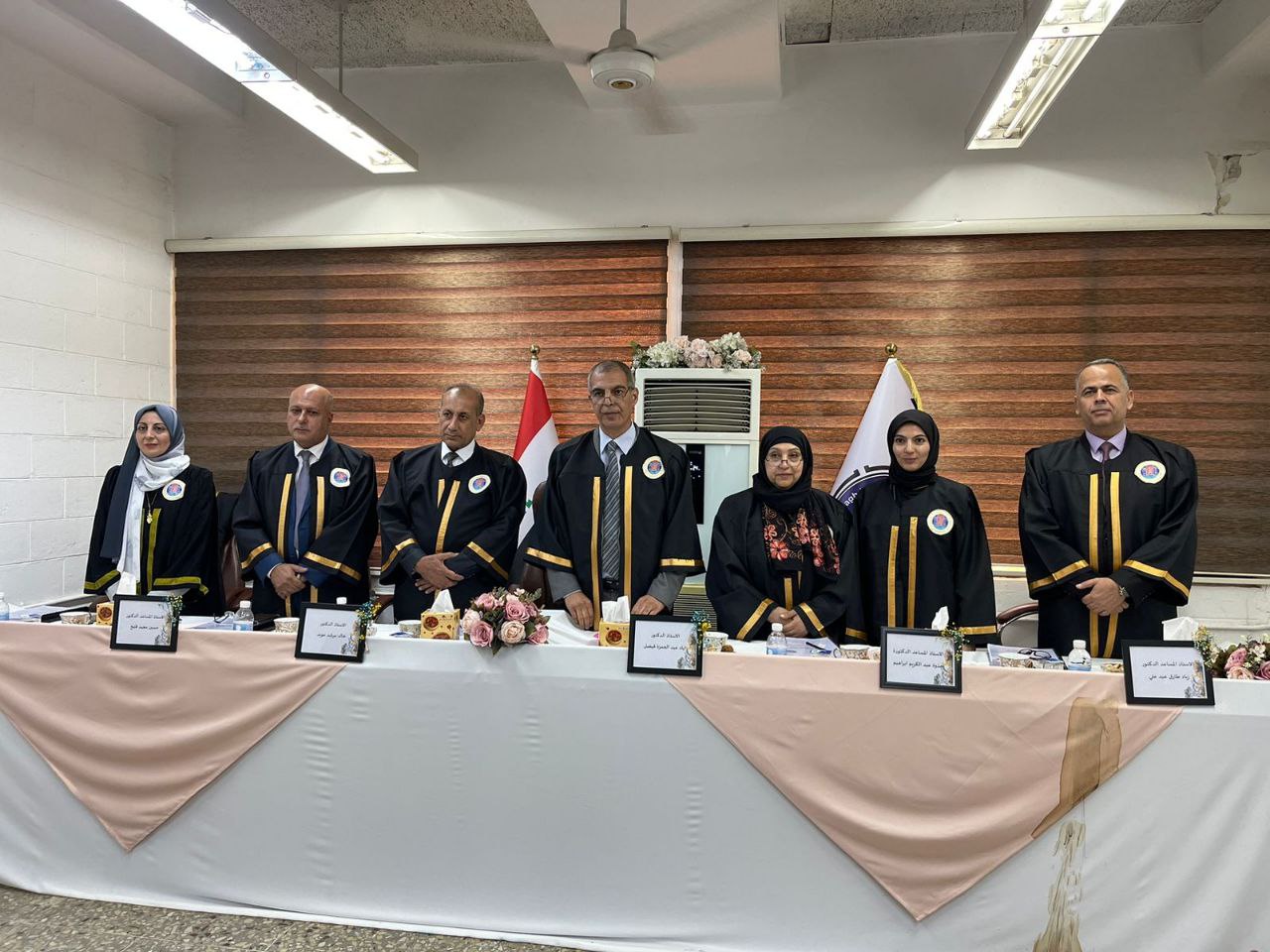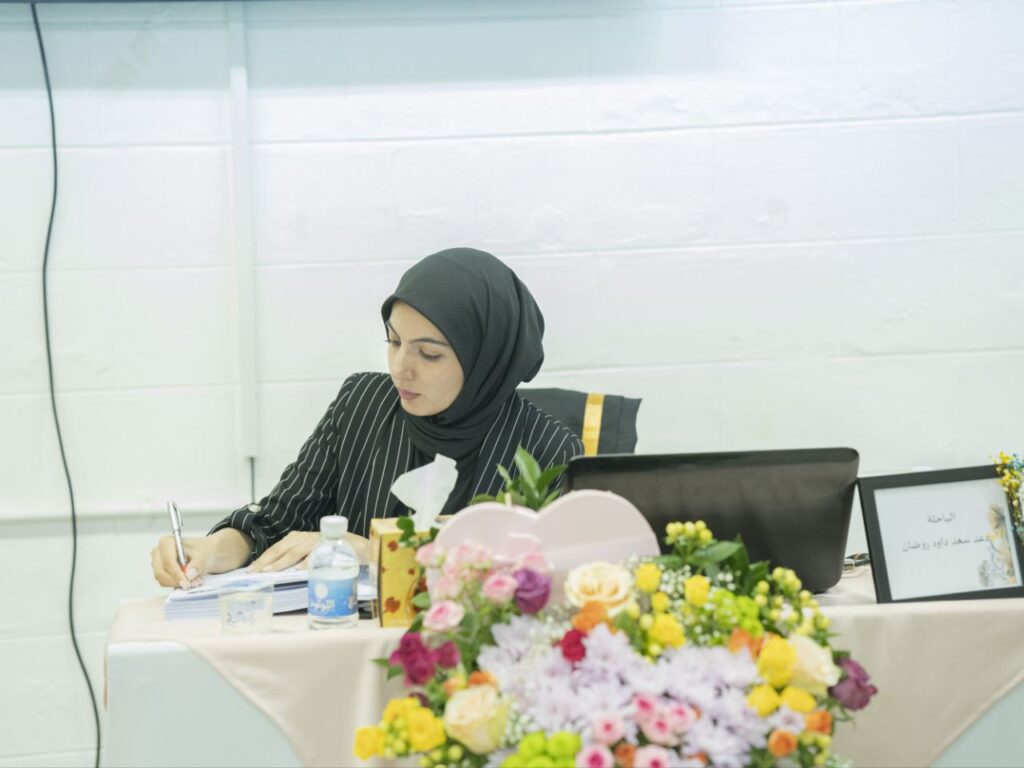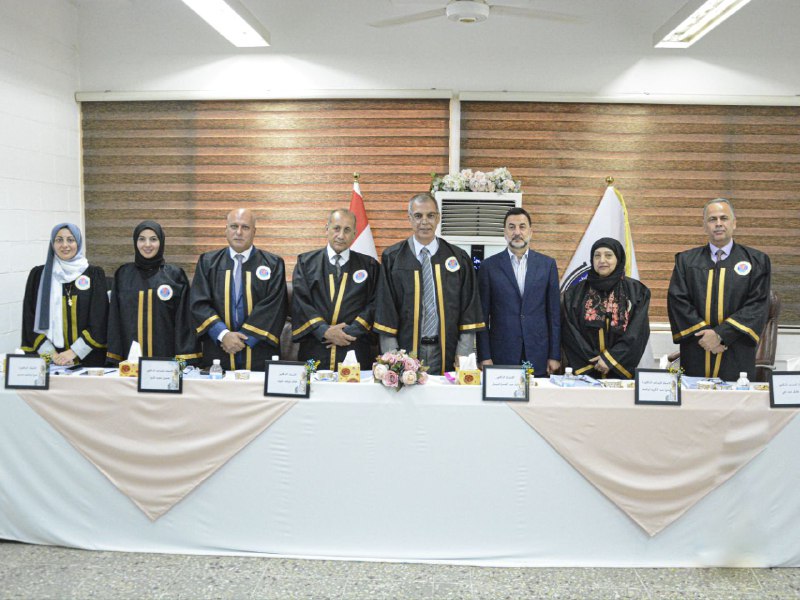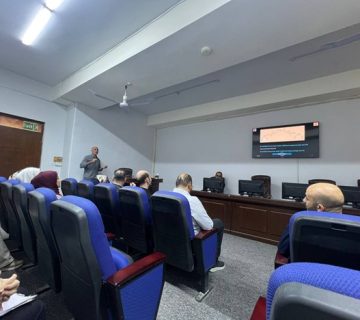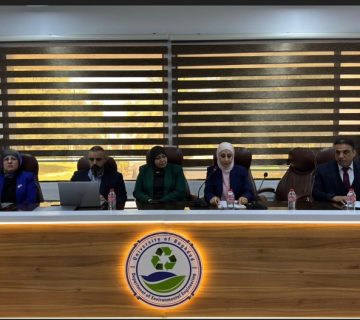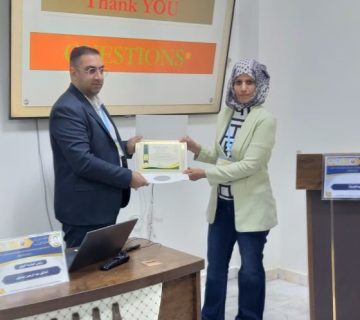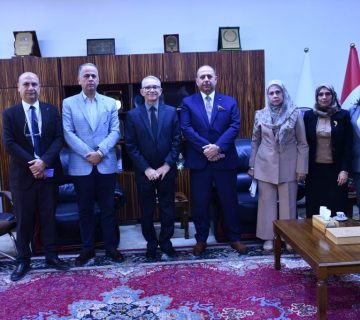Environmental Engineering Department at the College of Engineering, University of Baghdad, held Phd dissertation examination on Wednesday 8\5\2023 titled:
“Competitive removal of phenol and lead ions from aqueous solutions by using immobilized algae: patch and continuous systems“
By the student Daad Saad Dawood and supervised by Prof. Dr. Abeer Alwared. The examination committee consisted of Prof. Dr. Ayad abulhamza Faisal as Chairman, and the membership of Prof. Dr. Khalid Murshid, Assist. Prof. Dr. Jathwa Abdulkareem Ibrahim, Assist. Prof. Dr. Hussien Majeed Fleih, and Assist. Prof. Dr. Ziad Traik Abid Ali. After conducting the public discussion and listening to the student’s defense, the dissertation was accepted. It was summarized as follows:
Since lead and phenol are both widespread environmental pollutants, finding a method to effectively remove both would have significant positive effects on public health. But so far, not many efforts have been done. This work focused on the immobilized Chlorophyta algae, which was obtained from an irrigation stream in Al-Yousifia/Baghdad, pretreated, and synthesized to immobilize calcium alginate beads (AABs) using the entrapment method with different alginate-to-algae mass ratios. Alginate beads were examined in a batch and continuous fluidized bed system for their capacity to adsorb Pb+2 ions and phenol in both binary and single modes. Several tools, including the Brunauer, Emmett, and Teller (BET-BJH) method, Fourier transform infrared spectroscopy (FTIR), scanning electron microscopy (SEM), and energy dispersive spectroscopy (EDS), were used to characterize free algae, immobilized algal beads, and blank beads. Variables such as pH, contact time, pollutants concentration, AABs dose, agitation speed, bead size, and temperature were studied in a batch system. At 50 mg/l initial concentration and 200 rpm, Pb+2 ions adsorb most efficiently at pH 5, phenol at pH 6, and the binary system at pH 5. The biosorption of these contaminants reached equilibrium after an adsorption duration of 120 minutes. Under these circumstances, the optimal adsorbent dose for AABs was 0.5g/100 ml while for free algae it was 0.2g/100ml. The optimal removal biosorption for Pb+2 ions and phenol were 90.98% and 95.6%, respectively. The experimental results demonstrated that bothPb+2 and phenol were well described with the Freundlich isotherm model. And the best-fitted kinetics model for Pb+2 and phenol were pseudo-first-order and pseudo-second-order reactions, respectively. The thermodynamic study depicted that biosorption of Pb+2 and phenol onto AABs was spontaneous and feasible and endothermic and exothermic in nature for lead and phenol, respectively.
The response surface approach (RSM) was used in the simultaneous removal of Pb+2 ions and phenol. The Design Expert 13 program applied the CCD method to 56 trials to evaluate the same variables with the same value range in batch mode on the response of phenol and Pb+2 ions removal percent. According to the ANOVA results, the R2 values for the models for Pb+2 ions and phenol removal percentage were 0.9635 and 0.9667, respectively. To explore the equilibrium process at the initial concentration range of 5-125 mg/L of Pb+2 ions and phenol, multicomponent adsorption isotherms such as extended Langmuir and extended Freundlich were used. The results showed that binary solute biosorption followed the extended Freundlich model with minimal MPSD and ARE percent values. The two contaminants had an antagonistic effect on joint-biosorption removal. For the continuous removal of Pb+2 and phenol, a circulating fluidized bed reactor (CFB) was employed, and the effects of operational parameters such as bed thickness, air and water flow rate, and initial pollutant concentrations were examined. Different operating conditions were evaluated, including AAB static bed heights of 1, 3, and 5 cm, liquid flow rates of 100, 300, and 500 cc/min, airflow rates of 100, 300, and 600 cc/min, and initial pollutant concentrations of 10, 25, and 50 mg/L for pb+2 and phenol. As the contaminated water flow rate increased, bed height lessened, initial concentration increased, and airflow rate dropped, the time required to reach AABs saturation state declined. AABs bed functions best and endures longer than three hours before the bed biomass is depleted. The results of the hydrodynamics investigation revealed that pressure drop increases as liquid velocity increases at constant gas velocity and that once the minimum fluidization velocity is reached, pressure drops across the bed remain constant. As gas and water velocity increase, so does the expansion ratio. Bed height increases steadily over time as a key function of gas velocity and water velocity. In conclusion, the findings demonstrated that AABs are an effective medium for the biosorption of Pb+2 and phenol from an aqueous solution.

